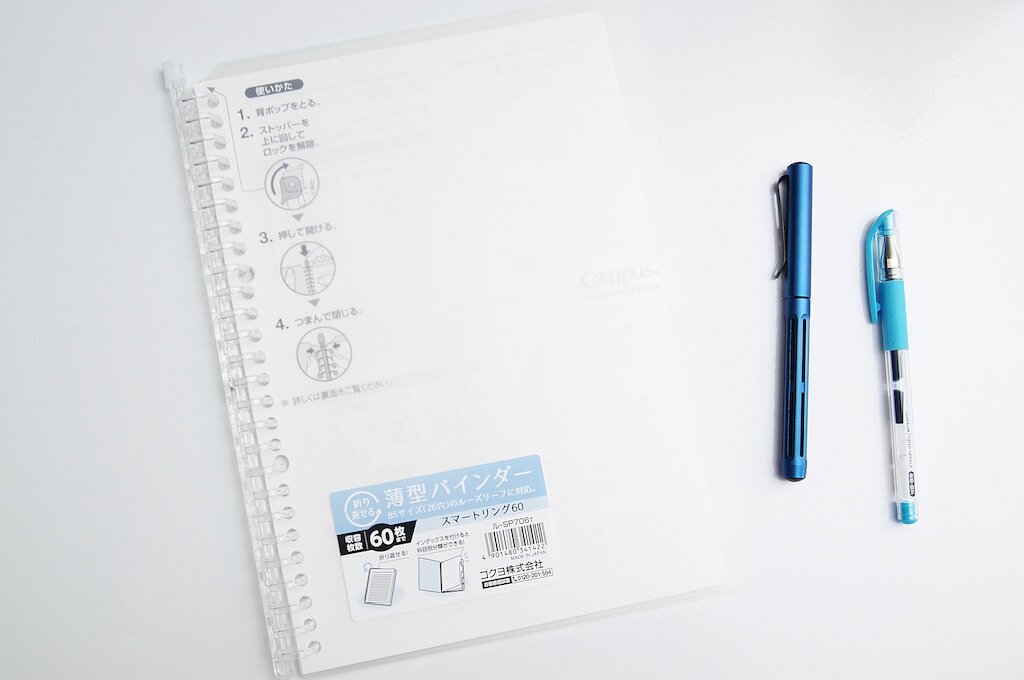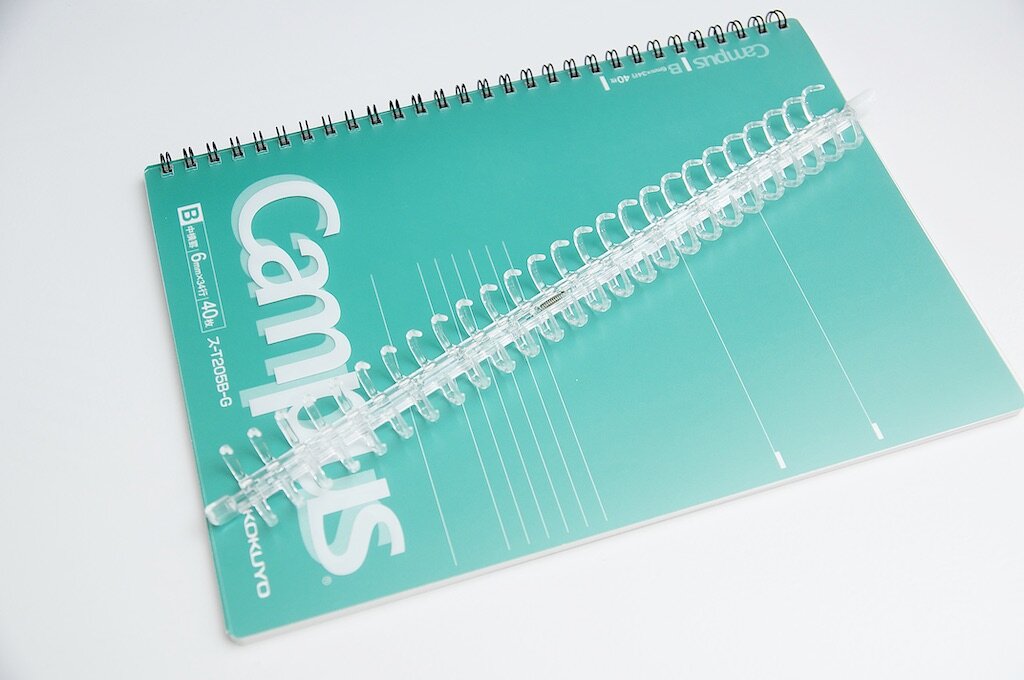(Jeff Abbott is a regular contributor at The Pen Addict. You can find more from Jeff online at Draft Evolution and Twitter.)
Tomoe River paper is something really special that took the stationery world by storm a few years back. It's extremely thin paper that is able to handle a ridiculous amount of ink without bleeding through or feathering across the page. It's a fantastic paper formula, and it's no wonder that everyone wants to get their hands on this stuff. In the beginning, it was difficult to come by, but that's a problem of the past for the most part.
The latest paper product that I've tried that uses Tomoe Paper is Tomoe's own Kanso Notebook. This is a plain B5 notebook with a clean thread binding and 30 sheets of beautiful 52gsm Tomoe River paper. You can also get this notebook in a cream color paper, but the one I have uses bright white paper.
As far as notebook specs go, this one is pretty plain. There is absolutely zero branding on this notebook. The covers are plain white with no words, graphics. or debossed logos. The binding tape is plain black, the corners of the notebook are squared, and the pages are entirely blank. If Tomoe River were competing in a minimalistic notebook contest, they've won it with the Kanso.
Honestly, I'm fine with the lack of branding on this notebook. It's all business, and I'm sure that knocks a few cents off the end price as well. What everyone really cares about in this notebook is the paper. It's fabulous. Writing on Tomoe River paper is a smooth experience. There's very little feedback on the nib, but just enough to let you control your strokes. I've never been able to make a pen or ink cause bleeding or feathering on Tomoe River paper. Show through is a problem, but that's due to the extreme thinness of this paper. It's the main downside of this paper, but I suspect everyone is already aware of that before they purchase any Tomoe River products. Dry time is fairly quick due to how quickly this paper absorbs the ink. But, you'll need to be careful and avoid shutting the notebook too quickly after writing, or you'll end up with ink ghosting on the opposite page.
In terms of durability, there's nothing special here. I don't expect the corners of this notebook to hold up very well after a few days of being carried in a bag. The sharp corners are begging to be bent and caught on all kinds of fabric and nearby objects. The cover material isn't very thick, either, so I expect the covers to tear and discolor rapidly. Since B5 is a fairly common notebook size, there are plenty of options for covering this notebook with a folio, case, or binder of some kind. My preferred cover is the Kokuyo Systemic, but there are plenty of other options if you look around.
Overall, I'm really pleased with the Kanso notebook! It's a no-frills worker of a notebook that showcases the wonderful Tomoe River paper. At $15, it's a good deal considering how much Tomoe River paper normally costs. This is a great introductory price and notebook format to try if you've never had the pleasure of using Tomoe River paper!
(JetPens provided this product at no charge to The Pen Addict for review purposes.)
Enjoy reading The Pen Addict? Then consider becoming a member to receive additional weekly content, giveaways, and discounts in The Pen Addict shop. Plus, you support me and the site directly, for which I am very grateful.
Membership starts at just $5/month, with a discounted annual option available. To find out more about membership click here and join us!























